Useful things to remember
Index
Start from your goals
Do you want to add a new practice?
Suggest a practice01
Start from your goals
The most effective way to organize your time is to start from your goals.
Carefully consider what you are asked to achieve in the next weeks and months in order to define priorities and allocate time on different activities, trying to estimate how much effort each of them will take.
If you realise you won't have enough time to accomplish all of your tasks, ask your manager to rediscuss your goals and allocation.
Tip: refer to OKRs
OKRs are a useful tool to align on objectives and priorities with your manager and team. If you’ve already set the OKRs with your team, refer to them as a way to understand how to use your time.
Warning: be aware of your priorities and time
It’s always good to help a colleague in case of need, but if additional requests and extra-work become the standard and prevent you from carrying out the most important tasks, all the organization will be affected.
When asked to do something outside your priorities and time allocation, always consider how it relates to your goals and how to optimize the time you’re investing on it. Also, keep track of any extra-request and report them to your manager, to eventually reset your priorities later on.
Read less
02
Schedule your week
Set your agenda for the week, by reviewing, accepting or declining all the pending invitations, and then using the remaining time-slots to allocate additional meetings and moments of work, based on your tasks and goals.
As your colleagues will look at your agenda to schedule new meetings, it could be helpful to make it public and include blocked time-slots in the moments in which you don't want to be disturbed or are not available (you can use the acronym OOO, standing for out-of-office). Those protected moments could help preserve time for focused working sessions and should be used mindfully.
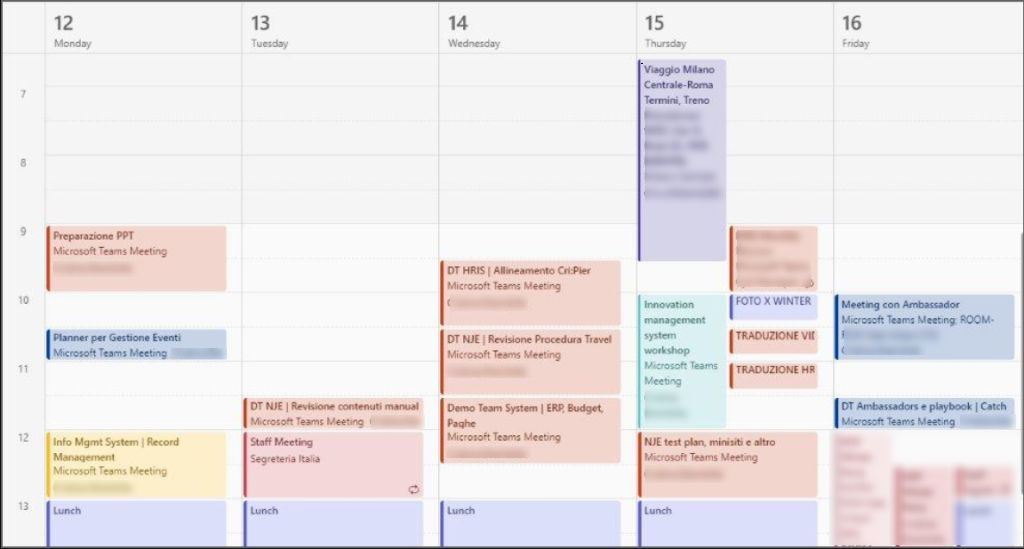
Warning: keep your calendar updated
Make sure your calendar always reflects your planned use of time, considering both meetings and other types of sessions or appointments.
When you receive an invitation to a meeting, don’t wait too long to accept or decline. The longer you wait, the harder is going to be to organize the week as other people could try to schedule appointments in the same time-slots, creating conflicts. If you decline, make sure to include a motivation for your rejection and/or propose a new time slot.
When you start your working day, in the morning, take 5 minutes to verify your agenda, accept pending invitations, decline or cancel appointments in which you can’t be available, block time-slots if needed and mark out-of-office time (if any) in the following days.
Tip: distinguish different meeting types
Use a clear system to name meetings and assign different colours to help differentiate the different types of events in the agenda. In this way you’ll know at-a-glance how your week is structured.
Meeting types include the “Out-Of-Office”, that should be visible to everyone in your agenda.
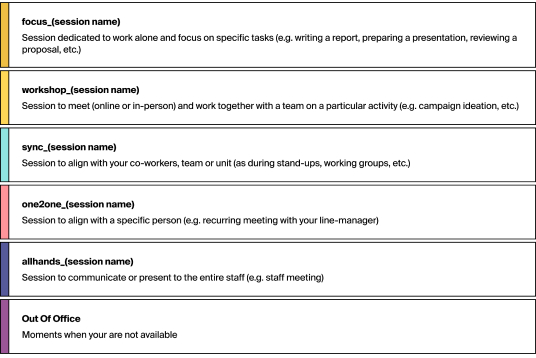
Tip: set public vs private meetings
If you make your calendar public, your colleagues would be able to see not just if you are available or not, but also the type of meeting you are going to have: this will help them being respectful for your own agenda when sending invitations.
If you’re adding time-slots or meetings you don’t want others to know (e.g. personal appointments or 1:1 sessions), you could just make them private so that others will just see the blocked slot, without knowing its title.
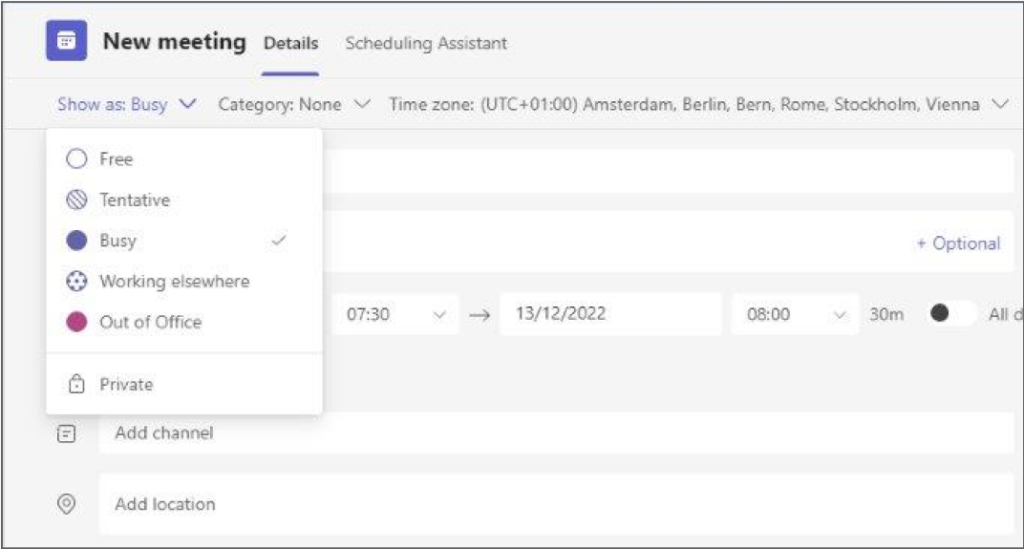
Read more
03
Set your office days
According to your agenda and team meetings, define the days you're going to work from the office.
The best days for office work are the ones in which you have workshops or collaborative sessions (they may be more effective in person), the ones in which you've critical meetings with colleagues or external providers, and those with fewer online calls (so it's going to be easier to spend some time chatting with other people in the office).
Add the office-days to your Teams status as all-day events, so that your colleagues are aware of your presence and could organise accordingly.

Tips: make the most of your office days
Here are some good practices to make the most of your time in the office:
1. Plan all the sessions that could benefit from being in-person in those days (creative sessions, critical discussions, long-meetings, etc.).
2. Reach out to colleagues for a coffee or lunch, to meet people you don’t normally talk to in your everyday calls.
3. Update your status on Teams:
- Next to your status, choose your work location from the location dropdown menu.
- Update your availability, so people will know when to come/not to come to your desk or call you.
- Schedule the out of office status in case you take some time off.
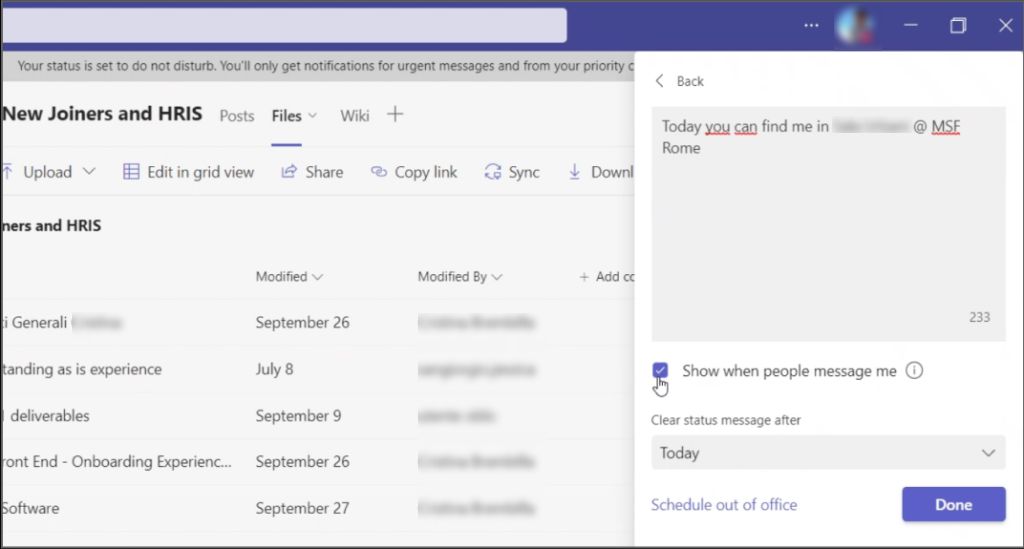
Read more
04
Schedule one-to-one meetings
If you need to discuss more personal or sensitive topics with your manager or one of your colleagues, the best approach is to find a time-slot in your calendars when you're both free, and send invitations in advance. Remember to mark them as private.
This helps making sure you'll both have the right attention, energy and privacy needed, and could get prepared for the conversation.
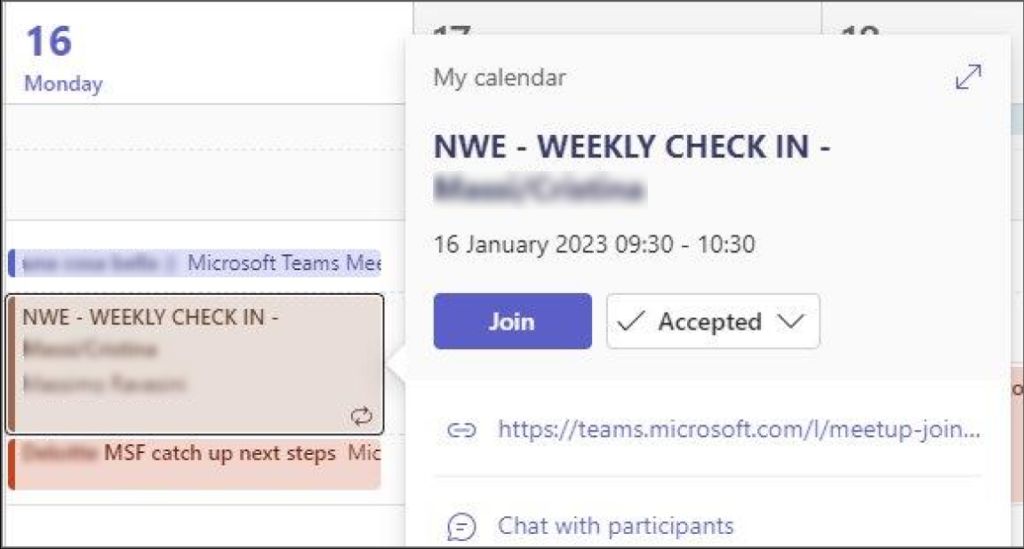
Tips: define how much time you need
One-to-one meetings could last from 25/30 minutes to 50 minutes/1 hour, depending on the need. A duration of 25/30 minutes is enough if the one-to-one is a recurring appointment (e.g. to review how things are going, with your manager or HR). Otherwise, if you have several key topics to discuss or it’s a rare moment of sync, 1 hour could work better.
Read more